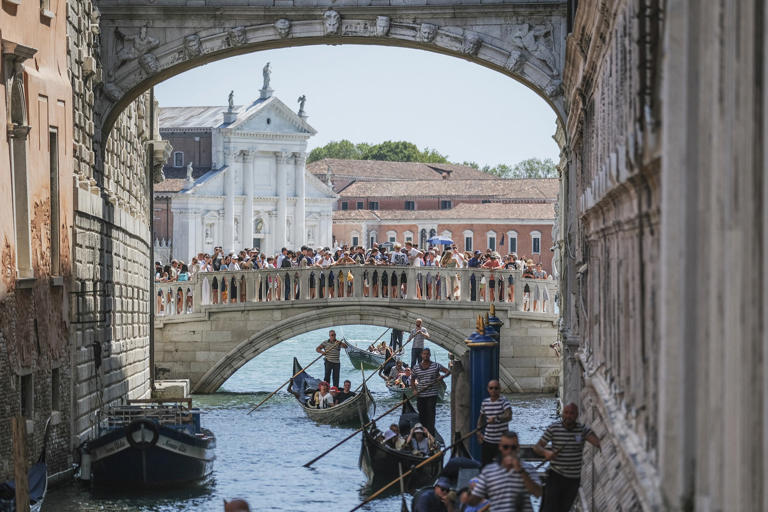“Venice tourist fee, Venice overcrowding solution, sustainable tourism, Venice travel restrictions, Venice day-tripper fee, managing tourism Venice, Venice peak days fee, UNESCO Venice, tourism management”
“Discover how Venice, Italy, is pioneering sustainable tourism with the introduction of the world’s first tourist entrance fee. Aimed at combating overcrowding, this innovative measure seeks to preserve the city’s beauty and heritage. Learn about the fee details, exemptions, enforcement, and the global implications of this groundbreaking initiative.”

Venice, Italy, a city renowned for its ancient allure and picturesque landscapes, has taken a revolutionary step by introducing a tourist entrance fee, a global first aimed at managing the overwhelming influx of visitors. This new measure was launched as a response to the significant overcrowding during peak tourist seasons, particularly evident in the city’s iconic canals, bridges, and striking architecture.
Understanding the Venice Tourist Fee
Starting on a Thursday as part of a trial phase scheduled to last until July 14, Venice has set a fee of 5 euros (approximately $5.35) for day-trippers on 29 peak days, primarily weekends. This initiative targets the vacation season’s highest visitor surges, seeking to distribute the tourist load more evenly throughout the year.
However, not everyone is subject to this fee. Tourists who book at least one night in a local hotel, as well as residents, workers, and students of the city, are exempt. Additionally, children under the age of 14 can enter without charge. Yet, all visitors, exempt or not, must register online to receive a QR code, which serves as their entry pass. For those without access to a smartphone, tickets can be purchased at the Santa Lucia train station.
Public Reaction and Implementation
The reaction to this new policy has been mixed among tourists and residents. Tourist Donna Porter-Mutchler from Tennessee praised the initiative, acknowledging the importance of preserving Venice’s unique beauty and heritage. Meanwhile, local resident Federica Toninello expressed skepticism, criticizing the fee as insufficient and more symbolic than effective in managing tourist numbers.
Venice’s approach to enforcing this fee is subtle yet firm. There are no physical barriers like turnstiles at entry points; instead, the city relies on random checks by inspectors. Those caught without a registered pass face fines ranging from 50 to 300 euros.
Information and Awareness Campaigns
To ensure widespread awareness of the new fee, Venice has launched an extensive information campaign across TV, newspapers, and other media in Italy and abroad. Mayor Luigi Brugnaro has even utilized artificial intelligence to produce a multilingual video message explaining the rationale behind the entrance fee.
Privacy Concerns and Broader Implications
The fee system has also raised concerns about privacy due to the collection of personal data, which according to tourist guide Luisella Romeo, could potentially be stored for up to five years and shared with third parties. This aspect of the system has led to apprehensions about the invasion of privacy and the handling of sensitive information.
The Global Context and Future Prospects
The city of Venice has been under close scrutiny by international bodies like UNESCO due to the risks posed by mass tourism to its delicate ecosystem. Past measures have included banning large cruise ships from entering the Venetian lagoon and setting limits on the size of tourist groups. The introduction of the tourist fee is another strategy in Venice’s ongoing efforts to balance tourism with preservation.
Other popular Italian destinations suffering from similar issues, such as Lake Como, are closely monitoring Venice’s experiment with the tourist entrance fee, potentially considering similar measures.
Conclusion
Venice’s pioneering tourist entrance fee represents a significant step towards sustainable tourism management. While it aims to alleviate the pressures of overcrowding, the initiative also underscores the challenges cities face in preserving their cultural heritage amidst booming tourism. As Venice navigates the complexities of this new system, the global community watches, possibly seeing a model that could be adapted worldwide. Whether this measure will achieve its intended impact remains to be seen, but it undeniably marks a bold move in urban tourism management.
Read More-